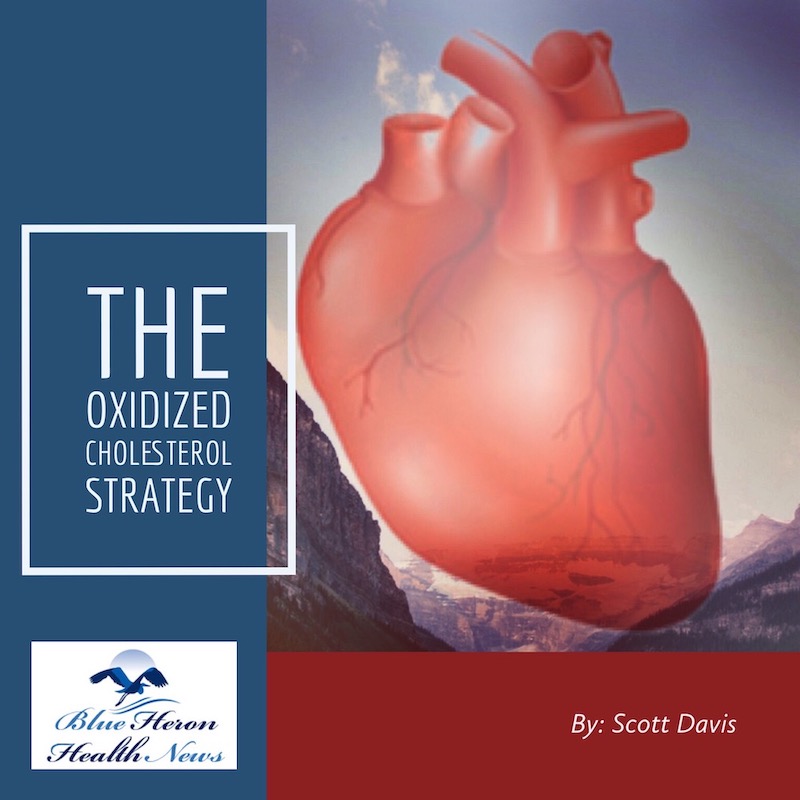
The Oxidized Cholesterol Strategy By Scott Davis is a well-researched program that reveals little known secret on how to tackle cholesterol plaque. This program will tell you step by step instructions on what you need to completely clean plaque buildup in your arteries so as to drop your cholesterol to healthy level. It also helps to enhance your mental and physical energy to hence boosting your productivity.
What is the role of inflammation in oxidizing cholesterol?
Inflammation plays a critical role in the oxidation of cholesterol, which is a key factor in the development of atherosclerosis (hardening of the arteries) and cardiovascular disease. Here’s a breakdown of how inflammation contributes to this process:
1. Inflammation and the Immune Response
- Chronic Inflammation: When the body experiences chronic inflammation, whether due to lifestyle factors (like a poor diet or smoking) or underlying conditions (such as diabetes or autoimmune diseases), immune cells (like macrophages) become activated.
- Release of Pro-inflammatory Molecules: These immune cells release inflammatory molecules, such as cytokines and free radicals, which contribute to oxidative stress (the imbalance between free radicals and antioxidants in the body).
2. Oxidation of LDL Cholesterol
- LDL (Low-Density Lipoprotein): Often referred to as “bad” cholesterol, LDL is one of the primary carriers of cholesterol in the bloodstream.
- Oxidative Stress: When LDL particles encounter an environment of oxidative stress (a result of chronic inflammation), they undergo oxidation. This means that free radicals damage the LDL particles, changing their chemical structure.
3. Impact of Oxidized LDL
- Increased Atherogenic Potential: Oxidized LDL (oxLDL) is more likely to contribute to the formation of plaques in the arteries. These plaques are made up of cholesterol, fatty substances, and inflammatory cells.
- Damage to Endothelium: Oxidized LDL is harmful to the endothelial cells that line blood vessels. It makes the endothelial cells more permeable, allowing more LDL particles to enter the artery walls, where they get trapped and further oxidized. This cycle can promote plaque formation and inflammation.
- Stimulates Immune Cells: Oxidized LDL also triggers immune cells like macrophages to enter the artery walls. These macrophages try to engulf and clear the oxidized LDL but often become overwhelmed, turning into foam cells that further contribute to plaque buildup.
4. Plaque Formation and Atherosclerosis
- The accumulation of foam cells, smooth muscle cells, and cholesterol within the artery walls leads to the formation of plaques (atherosclerosis). Over time, these plaques can harden and narrow arteries, restricting blood flow and increasing the risk of heart attacks and strokes.
- Inflammation within the plaques can also make them unstable, making them more likely to rupture and trigger blood clot formation.
5. The Role of Antioxidants and Anti-inflammatory Measures
- Antioxidants: Compounds like vitamins C and E, as well as certain polyphenols (found in foods like berries and green tea), can help neutralize free radicals and reduce oxidative stress, potentially slowing the oxidation of cholesterol.
- Anti-inflammatory Strategies: Reducing chronic inflammation through lifestyle changes (e.g., a healthy diet, regular exercise, weight management, and avoiding smoking) can help prevent the oxidation of LDL and reduce the risk of cardiovascular diseases.
Key Takeaways:
- Chronic inflammation accelerates the oxidation of LDL cholesterol, which contributes to the development of atherosclerosis.
- Oxidized LDL triggers further inflammation and immune cell activity, worsening the condition and increasing the risk of heart disease and stroke.
- Managing inflammation and oxidative stress is key to preventing cholesterol oxidation and reducing cardiovascular risks.
Would you like to explore more about managing inflammation or specific dietary strategies to reduce oxidative stress?
Genetic factors play a significant role in influencing cholesterol metabolism, including the oxidation of LDL (low-density lipoprotein) cholesterol. While lifestyle factors such as diet and exercise are critical, genetic predispositions can alter how the body handles cholesterol and how likely it is to become oxidized. Here’s how genetic factors influence oxidized cholesterol levels:
1. Genetic Variations in LDL Receptors
- LDL Receptor Gene Variations: The LDLR gene encodes the LDL receptor, which helps remove LDL cholesterol from the bloodstream. Variations in this gene can affect the efficiency of LDL clearance from the blood.
- Impact on Oxidized LDL: If LDL receptors are less effective due to genetic mutations (as seen in familial hypercholesterolemia), LDL cholesterol levels can remain elevated for longer periods, increasing the chance that the cholesterol particles will become oxidized. High LDL cholesterol is more likely to undergo oxidation, contributing to plaque buildup in the arteries.
2. Genetic Influence on Antioxidant Defense
- Antioxidant Enzyme Genes: The body has natural antioxidant defenses, such as enzymes like superoxide dismutase (SOD) and glutathione peroxidase. Genetic variations in the genes that encode these enzymes can affect their activity.
- Lower Antioxidant Capacity: Inherited variations that result in lower levels or reduced activity of these antioxidant enzymes may make it harder for the body to neutralize free radicals, leading to higher levels of oxidative stress and a greater tendency for LDL cholesterol to oxidize.
3. Genetic Predisposition to Inflammation
- Inflammatory Gene Variants: Certain genes involved in the inflammatory response, such as TNF-α (tumor necrosis factor-alpha) and C-reactive protein (CRP), may be more active in some individuals.
- Increased Inflammation and Oxidation: In individuals with genetic variants that predispose them to higher levels of inflammation, the chronic inflammatory environment can promote the oxidation of LDL cholesterol. Inflammation not only damages LDL particles but also facilitates the process of plaque formation in arteries.
4. Genetic Factors in Lipid Metabolism
- APOE Gene: The apolipoprotein E (APOE) gene plays a key role in lipid metabolism, and its variants (E2, E3, E4) influence cholesterol levels and lipid transport.
- APOE E4: This allele is associated with higher cholesterol levels and a greater tendency for LDL to oxidize, especially under conditions of oxidative stress.
- APOE E2: Conversely, the APOE E2 variant may lower cholesterol levels and is associated with a reduced risk of oxidation.
5. Genetic Risk for Metabolic Disorders
- Diabetes and Obesity: Genetic predispositions to conditions like type 2 diabetes and obesity can indirectly influence oxidized cholesterol levels. These conditions often involve insulin resistance, altered lipid metabolism, and chronic inflammation, all of which can enhance the oxidation of LDL.
- Insulin Resistance: In people genetically predisposed to insulin resistance, elevated insulin levels can contribute to the oxidation of LDL cholesterol and promote the accumulation of fat in the arteries.
6. Genetic Variability in Cholesterol Transport Proteins
- ABCA1 and ABCG1 Genes: These genes are involved in the efflux (removal) of cholesterol from cells to HDL (high-density lipoprotein, the “good” cholesterol). Variants in these genes can affect the body’s ability to clear cholesterol and may increase the likelihood that LDL particles become oxidized.
- Efficient Cholesterol Removal: Individuals with more efficient cholesterol efflux pathways tend to have lower levels of oxidized LDL, as they are better at transporting excess cholesterol out of cells.
7. Genetic Factors and Lifestyle Interactions
- Gene-Lifestyle Interactions: Even with a genetic predisposition to high LDL cholesterol or oxidation, lifestyle factors (such as diet, exercise, and smoking) can modify the impact of these genes. For example, a diet high in antioxidants (like fruits and vegetables) may help mitigate the effects of genetic variations that promote oxidation.
Managing Genetic Risk Factors
While genetic factors may predispose individuals to higher oxidized cholesterol levels, the impact can often be mitigated with:
- Dietary Modifications: Foods rich in antioxidants, like berries, green leafy vegetables, nuts, and seeds, can help neutralize free radicals and reduce oxidative stress.
- Regular Exercise: Physical activity can improve cholesterol metabolism and enhance antioxidant defenses.
- Medications: Statins and other cholesterol-lowering medications may help reduce LDL cholesterol levels and its oxidation.
- Inflammation Management: Anti-inflammatory strategies (like anti-inflammatory diets, stress management, and avoiding smoking) can lower the oxidative stress that contributes to LDL oxidation.
Would you like to explore specific genetic tests or personalized strategies to manage genetic risk factors for oxidized cholesterol?

The Oxidized Cholesterol Strategy By Scott Davis is a well-researched program that reveals little known secret on how to tackle cholesterol plaque. This program will tell you step by step instructions on what you need to completely clean plaque buildup in your arteries so as to drop your cholesterol to healthy level. It also helps to enhance your mental and physical energy to hence boosting your productivity.